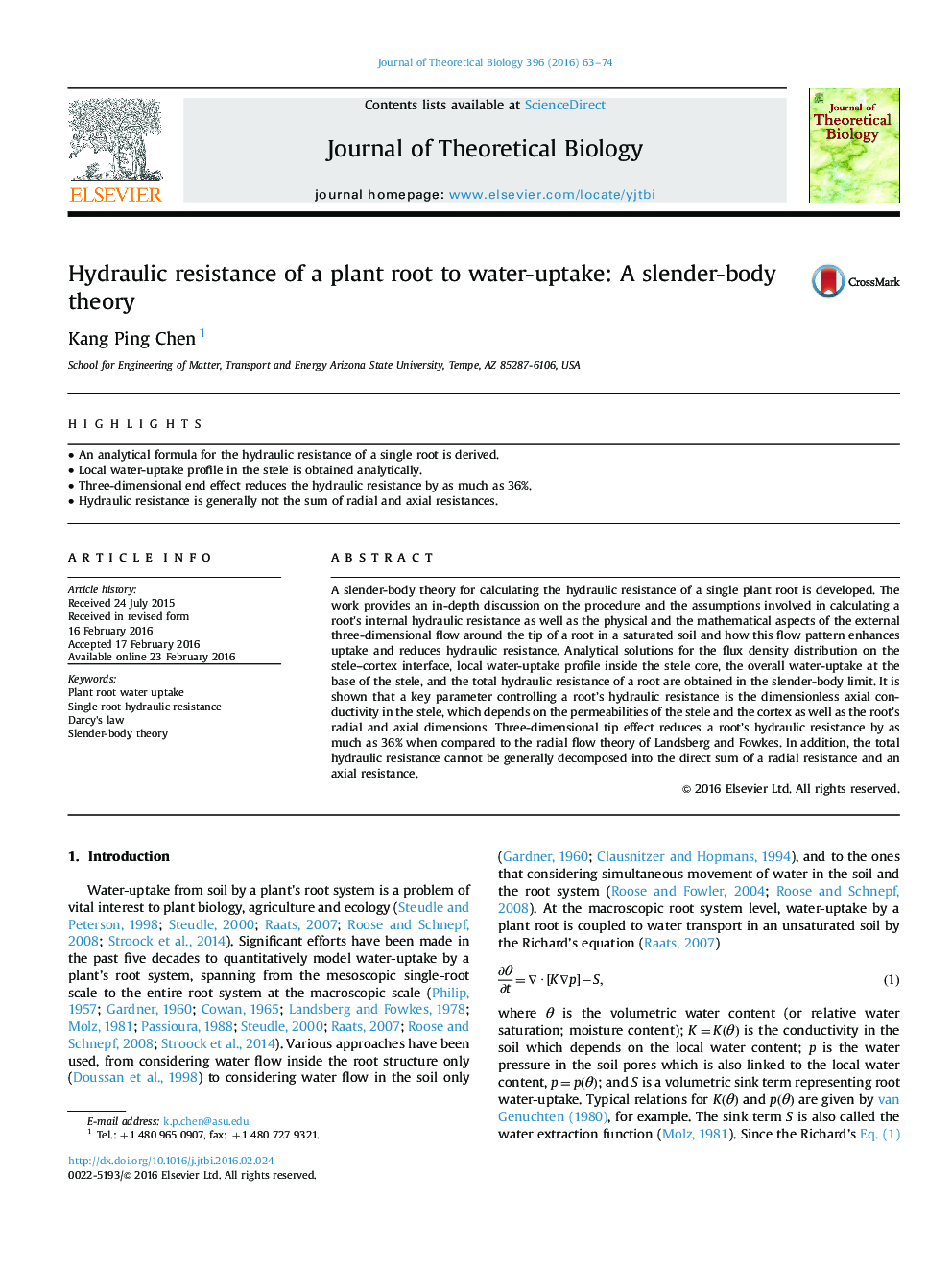| Article ID | Journal | Published Year | Pages | File Type |
|---|---|---|---|---|
| 6369293 | Journal of Theoretical Biology | 2016 | 12 Pages |
Abstract
A slender-body theory for calculating the hydraulic resistance of a single plant root is developed. The work provides an in-depth discussion on the procedure and the assumptions involved in calculating a root׳s internal hydraulic resistance as well as the physical and the mathematical aspects of the external three-dimensional flow around the tip of a root in a saturated soil and how this flow pattern enhances uptake and reduces hydraulic resistance. Analytical solutions for the flux density distribution on the stele-cortex interface, local water-uptake profile inside the stele core, the overall water-uptake at the base of the stele, and the total hydraulic resistance of a root are obtained in the slender-body limit. It is shown that a key parameter controlling a root's hydraulic resistance is the dimensionless axial conductivity in the stele, which depends on the permeabilities of the stele and the cortex as well as the root's radial and axial dimensions. Three-dimensional tip effect reduces a root's hydraulic resistance by as much as 36% when compared to the radial flow theory of Landsberg and Fowkes. In addition, the total hydraulic resistance cannot be generally decomposed into the direct sum of a radial resistance and an axial resistance.
Keywords
Related Topics
Life Sciences
Agricultural and Biological Sciences
Agricultural and Biological Sciences (General)
Authors
Kang Ping Chen,
